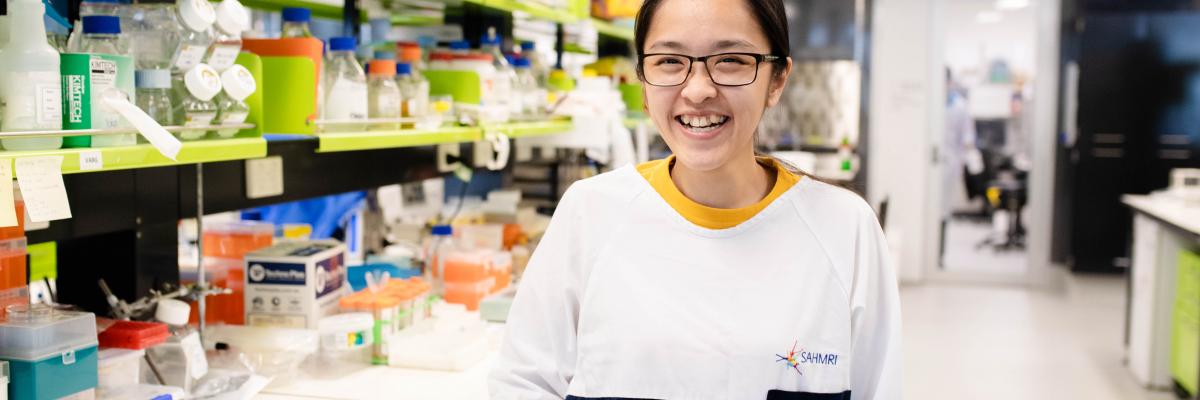Connected Conversations | Yoko Brigitte Wang
Science and art might be the furthest apart two disciplines can be but third-year PhD student, Yoko Brigitte Wang, recently found science communication—now combining the best of both worlds. A precursor to her interdisciplinary passions, Yoko’s research focuses on neuroscience and nutritional epidemiology and her inspiration dates back to her high school days.

Please tell us a little bit about yourself.
Hi! I’m Yoko and I’m a third-year PhD student within the Adelaide Medical School. I’m an Australia Awards Scholar from Indonesia. Most people know me as a scientist researching appetite regulation in obesity, but some may also see me as an artist or a baker! I’m passionately curious and love to learn new things. Recently, I got into science communication, where I can combine my passion in science and arts together.
One thing that inspired me to pursue my current pathway was my experience in high school. In my first year, I was selected for the National Biology Olympiad team, representing my province in the nationals. The competition itself was fun but it was during the training process that I fell in love with science. I will never forget the moment when I held my first micropipette 11 years ago and raced with other friends to complete our experiment in half an hour. From that experience, I realised that I enjoyed solving problems, I love science, and I want to help people through science.
What are you working on now?
I do interdisciplinary research, combining neuroscience and nutritional epidemiology to study appetite regulation and obesity. Inside the lab, I work with the vagus nerve in the gut to investigate how neural control of appetite changes in obesity. Outside the lab, I use statistics and modelling to figure out how diet type relates to appetite and risk of obesity.
What excites you the most about your research?
The thing that excites me the most is electrophysiology, a technique to measure nerve activity. When nerves are active, they generate electrical signals. A special machine converts these signals into sound and picture so we can hear the nerves using headphones and see their activity on-screen. Different nerves have different sounds and some of them sound like heartbeats!
I hope that my research can improve understanding the role of the nervous system and diet in appetite regulation. So, we can develop new strategies to prevent or treat obesity by targeting the nervous system or modifying dietary intake to help people with obesity.
What do you do in your spare time?
I have many hobbies. Recently, I have spent most of my spare time on baking, photography, and producing stop-motion and science explanatory videos. I also like solo travel or embarking on culinary adventures with friends. However, during this time I mostly spend my time at home, I switch off my phone, do yoga, read books, and watch Netflix!
What are your hopes for 2021?
- See vaccines for COVID-19 become available so the world can get better.
- Be able to get on a plane again and travel somewhere; for conferences, holidays and, to visit my family.
- Become a better science communicator and maybe write a science book for kids.
